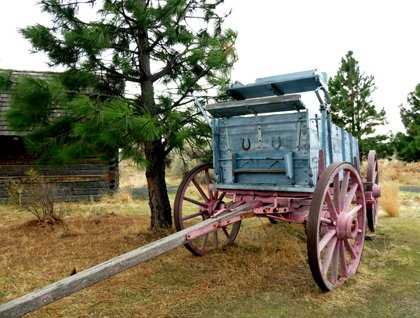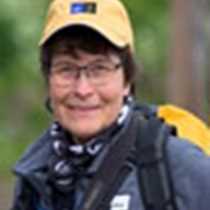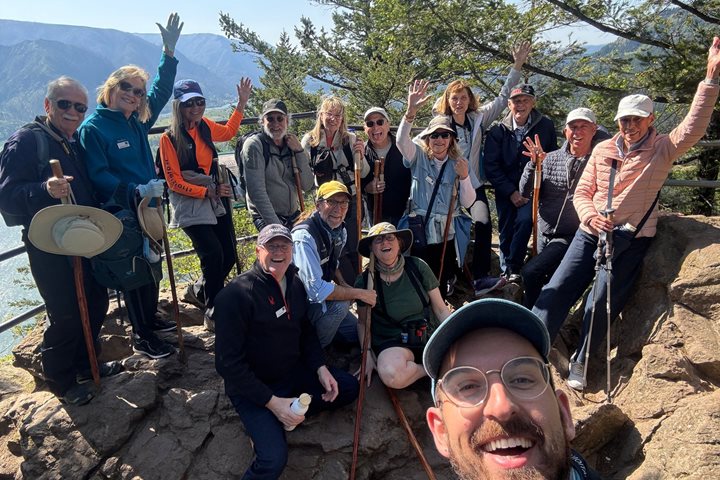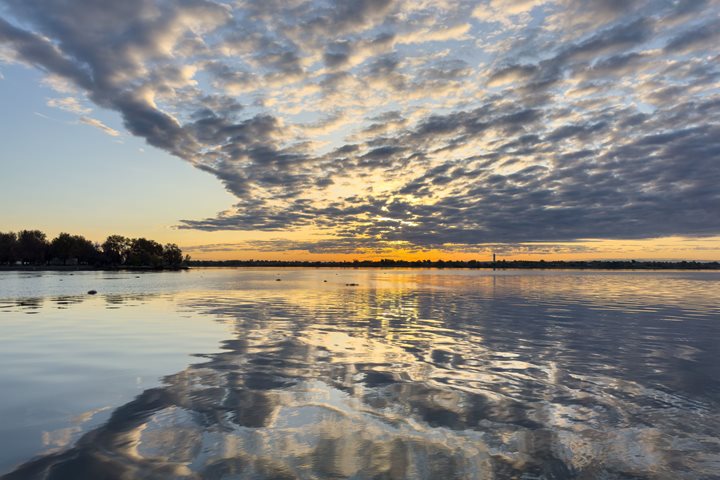At 0600 hours National Geographic Sea Bird is entering the lock at John Day Dam. At 110 feet, this is the highest lift-lock in America. Here we have been delayed by barges going into the lock ahead of our ship. A waning crescent moon peeks between the clouds and Venus shines brightly below it. The weather is noticeably warmer today with the temperature at 50 degrees Fahrenheit—nearly 20 degrees warmer than yesterday morning on the Palouse River.
When we arrive at The Dalles Dam, barges are filling the lock so arrangements are made for our motor coaches to meet us at a landing just east of the lock. While waiting we can just see the snow-clad slopes of Mount Hood, a giant stratovolcano, through the clouds. A bald eagle soars in and perches in a small tree along the shore. From here it makes some short forays out over the water, as if to catch a fish. We launch our expedition landing craft and go ashore at a small dock and board the coaches for the ride to the Columbia Gorge Discovery Center. On the drive we notice the presence of trees, something we have seen little of east of here where the rainfall is much less.
At the Columbia Gorge Discovery Center we see not only the excellent displays on natural history, but also the history of Lewis & Clark and of Wasco County and the Oregon Trail. The walk around the grounds is a great place for birding and for seeing many of the plants described by Lewis & Clark. A presentation on raptors is given with beautiful red-tailed hawk, a great horned owl, and a kestrel. Some of us bike all the way back to the ship—5.5 miles down a winding trail that follows near the river. Others take a walk around the grounds with Rich, our naturalist and photo instructor, while those wanting more exercise head out on a brisk walk with Grace, our geologist/naturalist. Some of our traveling companions have gone to Rock Fort with historian Don Popejoy to see Rock Fort Camp that was used by Lewis & Clark on their journeys both in 1805 and 1806.
In the afternoon we cross the Columbia River, driving to Washington, first to Sam Hill’s version of Stonehenge, built to honor soldiers of Klickitat County who died in WWI, and then to Maryhill Museum of Art. This museum has perhaps the most eclectic collection of objects we have ever seen in one place. From here, high above the river, we have another chance for epic views. Across the river we are able to see the ruts carved into the hillside by wagon wheels of the pioneers on the Oregon Trail from 1840 to 1860.
Our last stop is at the award-winning Maryhill Winery where we taste their prize wines and enjoy more views out over the vineyards and across the river. At last we are back on our ship, our home-away-from-home, to a delicious dinner followed by another intriguing talk by Don, this on the life Jean Baptiste Charbonneau.







